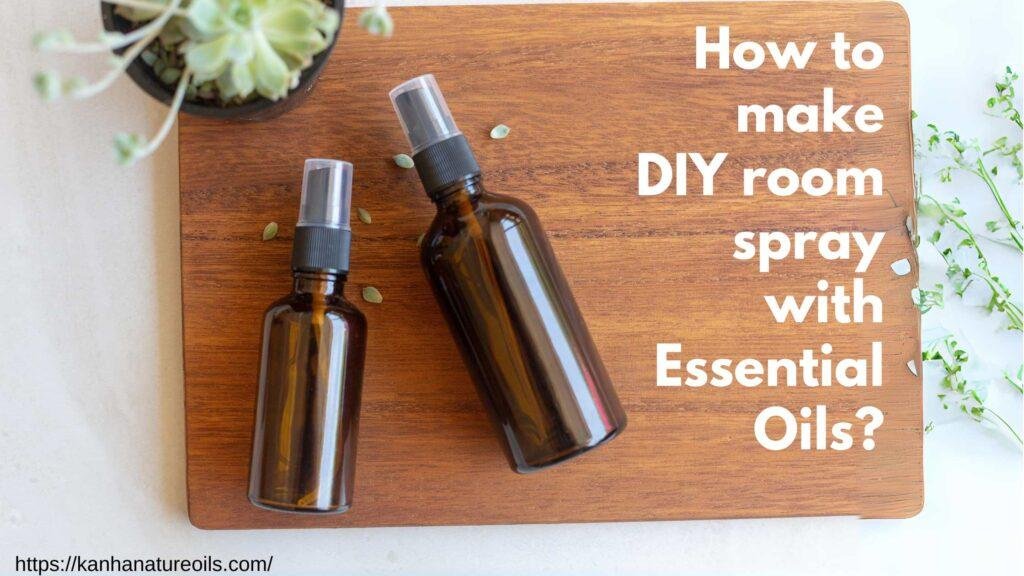How to Make DIY Room Spray with Essential Oils?
Room sprays are a fantastic way to freshen up your living space with delightful scents while also benefiting from the therapeutic properties of essential oils. Let’s explore the world of DIY room sprays and how you can easily create your own personalized blends right at home.
What are Room Sprays?
Room sprays are liquid fragrances that are sprayed into the air to add a pleasant aroma to a room.
They can help to
- eliminate odors,
- create a relaxing atmosphere, and
- even boost your mood.
Benefits of Using Room Sprays
- Instantly refreshes the air in your home
- Masks unpleasant odors
- Creates a calming or uplifting ambiance
- Promotes mental clarity and focus
Common Ingredients in Commercial Room Sprays
Commercial room sprays often contain artificial fragrances, preservatives, and chemicals that may have negative effects on your health and the environment.
By making your own room spray with essential oils, you can avoid these harmful ingredients and enjoy a natural alternative.
Choosing Essential Oils
Understanding Different Types of Essential Oils
Essential oils are concentrated plant extracts that are known for their aromatic and therapeutic properties. There are various types of essential oils, each with its own unique scent and benefits. Some popular essential oils for room sprays include lavender, peppermint, eucalyptus, and citrus oils.
Blending Essential Oils for Desired Scents
Experimenting with different essential oil combinations is the key to creating a room spray that suits your preferences. You can mix and match oils to create relaxing, energizing, or invigorating scents that cater to your mood or the ambiance you want to create.
Safety Precautions When Using Essential Oils
It’s essential to dilute essential oils properly before using them in a room spray to prevent skin irritation or adverse reactions. Always perform a patch test and follow recommended guidelines for safe usage.
Creating Your DIY Room Spray
Supplies Needed for Making Room Sprays
- Distilled water
- Essential oils of your choice
- Witch hazel or vodka (as a dispersant)
- Glass spray bottle
Step-by-Step Instructions for Mixing Essential Oils
- Fill the glass spray bottle with distilled water, leaving some room at the top.
- Add a few drops of essential oils based on your desired scent strength.
- Add a small amount of witch hazel or vodka to help disperse the essential oils.
- Shake well before each use to blend the ingredients.
Storing and Using Your Homemade Room Spray
Store your DIY room spray in a cool, dark place to preserve the quality of the essential oils. Shake well before each use and spray into the air to enjoy the aromatic benefits.
Popular Essential Oil Room Spray Recipes
Relaxing Lavender and Chamomile Room Spray
- 10 drops lavender essential oil
- 5 drops chamomile essential oil
Energizing Citrus and Peppermint Room Spray
- 8 drops citrus essential oil
- 5 drops peppermint essential oil
Soothing Eucalyptus and Tea Tree Room Spray
- 6 drops eucalyptus essential oil
- 5 drops tea tree essential oil
Tips for Using Your Room Spray
Spraying Techniques for Effective Scent Distribution
- Spray your room spray towards the center of the room for even distribution.
- Avoid spraying directly on fabrics or furniture to prevent staining.
Using Room Sprays for Different Purposes
- Relaxation: Create a calming atmosphere by using room sprays with lavender, chamomile, or jasmine essential oils. Spritz it in your bedroom or living room before meditation or bedtime to promote relaxation.
- Energizing: Opt for citrus scents like lemon, orange, or grapefruit to invigorate your senses and boost energy levels. Use it in your workspace or kitchen to help you stay focused and alert.
- Odor Elimination: Keep your space smelling fresh by using room sprays with odor-eliminating properties. Look for sprays containing ingredients like activated charcoal or enzymes that neutralize unpleasant odors from pets, cooking, or smoking.
- Mood Enhancement: Set the mood for a specific occasion or activity with appropriately scented room sprays. For example, use floral scents like rose or jasmine for a romantic dinner, or choose woody scents like cedar or sandalwood for a cozy evening at home.
- Seasonal Themes: Switch up your room spray scents to match the seasons. Use crisp, clean scents like eucalyptus or peppermint in the winter, fresh floral scents in the spring, fruity scents in the summer, and warm, spicy scents in the fall.
- Mindfulness and Meditation: Incorporate room sprays with earthy or herbal scents like sage, frankincense, or patchouli into your mindfulness or meditation practice. Spritz it in your meditation space to help create a sense of tranquility and focus.
- Aromatherapy: Choose room sprays infused with specific essential oils to target specific needs. For example, use peppermint and eucalyptus for congestion relief, lavender for stress reduction, or bergamot for mood enhancement.
- Air Purification: Use room sprays with natural antibacterial and antiviral properties, such as tea tree or thyme essential oils, to help purify the air and reduce the spread of airborne germs.
Conclusion
Creating your DIY room spray with essential oils is a fun and rewarding experience that allows you to customize the scents in your home while reaping the benefits of aromatherapy. Say goodbye to commercial room sprays filled with synthetic fragrances and hello to a natural, eco-friendly alternative that is both budget-friendly and safe for your health.



